Almost instantly upon airing, Game of Thrones became an international TV phenomenon. The HBO series made excellent use of George R. R. Martin’s A Song of Ice and Fire novels as source material, bringing the fantastical world of Westeros and its many rival factions to life in live-action in spectacular and often brutal fashion. Running for a total of 73 episodes over eight seasons, Game of Thrones was a massive hit for HBO, and it also proved to leave its mark on pop culture, becoming one of the most watched and most talked-about TV shows in modern history. However, it wasn’t always completely faithful to its source material.
Videos by ComicBook.com
Over the course of its run, Game of Thrones overtook Martin’s novels, forging its own story as it did so. While some of the changes made by Game of Thrones from the books were better, others were less popular. Whether due to audience disappointment or simple missed opportunity, the TV show actually betrayed the books in a number of ways.
1) Tyrion Murders Shae
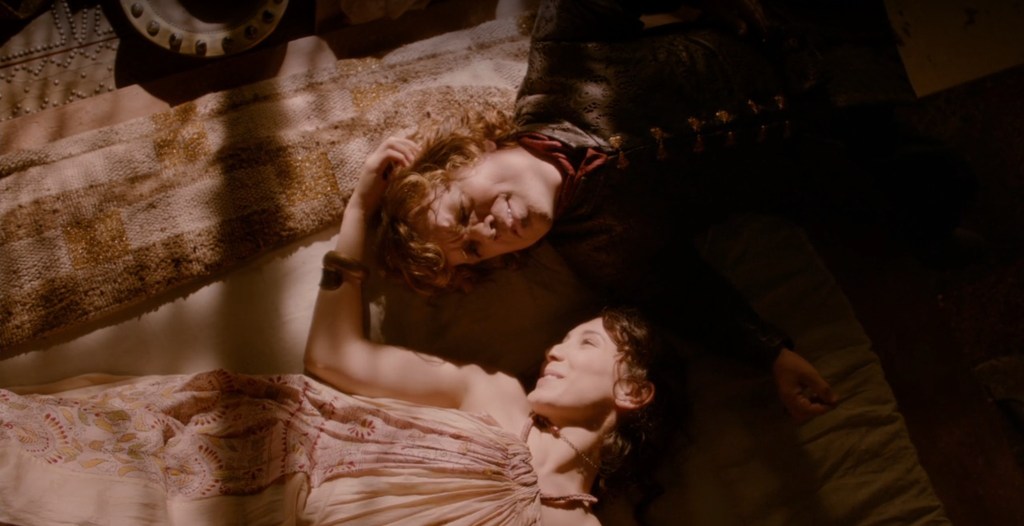
What once seemed to be one of Game of Thrones‘ best romances turned bloody when Tyrion discovered Shae in his father’s bed. The relationship between the pair may have been doomed from the start, but the genuine affection they held for one another throughout the show was one of its few heartwarming aspects. However, the show sees Shae turn on Tyrion after he pushes her away for her own safety, culminating in her violent end.
After Tyrion finds Shae in his father’s bed, she attacks him with a knife, and he strangles her to death in self-defense. However, in the books, he simply murders Shae in a rage, highlighting the darker side of Tyrion’s hatred for his father. By having Shae attack Tyrion first, the show made Tyrion come off slightly better, but their ending made less sense and ultimately betrayed the books for no good reason at all.
2) Sansa Marries Ramsay
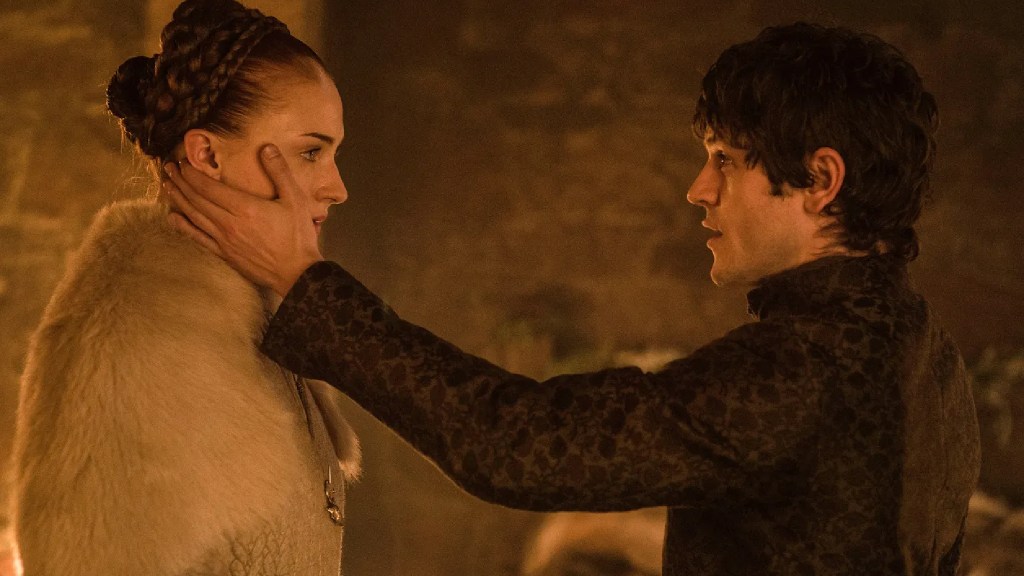
On many occasions, Game of Thrones added entire storylines that were not present at all in the books. Perhaps the most contentious of these was the marriage of Sansa Stark to Ramsay Bolton, not least because it resulted in a number of incredibly sadistic moments throughout Sansa’s ordeal at Ramsay’s hands. Though it certainly added a good deal of drama to the show, it betrayed the books by not really making any sense.
The show saw Littlefinger marry Sansa off to Ramsay, though everything about Littlefinger as a character suggests that he would have kept her much closer to hand. His own ambition would have been far better served had he convinced Sansa to marry him instead, rather than knowingly putting her in the danger posed to her by Ramsay. In a narrative sense, there was no real need for the addition, other than to add even more suffering to Sansa’s already dark character arc.
3) Robb Stark’s Death

Robb Stark’s fate at the Red Wedding served as one of Game of Thrones‘ most important deaths, but it was also a betrayal of the source material in an especially subtle way. In the show, Robb falls in love with Talisa, marrying her and breaking his vow to marry the daughter of Walder Frey, ultimately leading House Frey to plot against the Starks with the Lannisters. However, in the books, Robb’s fate, while similar, is far less selfish and contains a poetic dose of irony.
In the books, Robb is consoled after the apparent loss of his brothers by Jeyne Westerling, a lord’s daughter who he sleeps with and then marries in order to protect her reputation. Robb’s marriage in the books is not a selfish one, but instead an honorable choice, ultimately causing his good nature to be his downfall. This has Robb’s death echo that of his father, stemming from the Lannister’s exploiting their respective noble streaks. However, the show lost that element of narrative death by instead making Robb’s marriage a selfish act of love.
4) Jaime & Cersei In The Sept

Although Game of Thrones is known as one of the best fantasy TV shows of all time, a great deal of its charm actually stems from the more human elements of its drama. Such is certainly the case with the characters of Jaime and Cersei Lannister, whose incestuous relationship is one of the most twisted romantic aspects of the entire show. However, one scene between them was changed from the books to make it far more disturbing.
In the books, Jaime and Cersei meet in the Sept of Baelor shortly after Joffrey’s death, where they grieve together beside his corpse before sharing an inappropriate but consensual intimate moment. In the show, the scene was changed to be non-consensual, with Cersei telling Jaime his actions are inappropriate before he continues to assault her in front of Joffrey’s corpse. It was an incredibly unnecessary betrayal of the source material, especially considering it made no real difference to the story other than to add even more sexual violence.
5) Danaerys Not Grieving Viserys
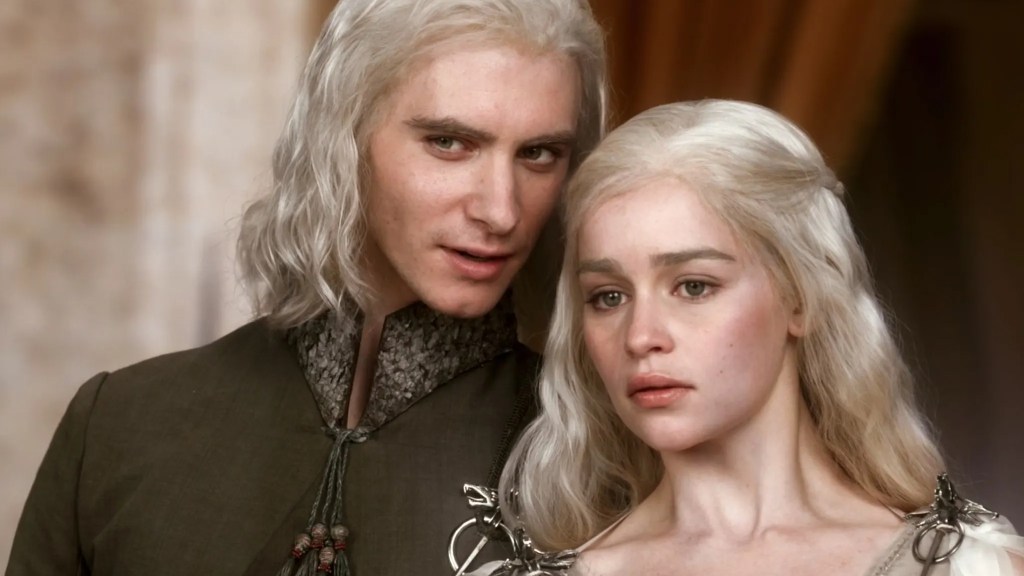
It is established in both the show and the books that the Targaryen family are all haunted by dragon dreams. Many of these dreams are prophetic, though even those that aren’t convey a great deal of meaning for their characters. In the books, Daenerys dreams consistently of her brother Viserys after his death, effectively being haunted by her brother from beyond the grave, marking her grief and conflicting emotions about the only family member she had for much of her life.
Game of Thrones made an odd choice to change that for the show, however. Instead of having Viserys reappear to Daenerys, he is never seen again after his death, subtly implying that he meant very little to his sister. By removing the scenes in which Daenerys reflects on her strained and complex relationship with Viserys, it makes her seem a much colder and more ruthless figure than she needed to be, betraying her depiction in the source material as a result.
6) The Stark Children Not Being Skinchangers

Fans who loved Game of Thrones often cite the Stark children as the show’s most important characters, as their respective stories tie together the entire sprawling narrative from beginning to end. However, there are several aspects of the characters that were present in the books that were left out of the show, and in many ways, the Starks came off worse for it. In the books, all of the Stark children are either shown skinchanging into their direwolves or having dreams of doing so.
The show made no mention of this ability for any of the Stark siblings other than Bran. Bran is the only Stark in the show with any supernatural talents at all, which is all linked to his warging and his destiny as the Three-Eyed Raven. By leaving out the Starks’ ability to skinchange with their direwolves, Game of Thrones missed an opportunity not just to make use of the books’ more fantastical elements but also on further incorporating the characters’ beloved animal friends into the show’s narrative.
7) The Consummation Of Drogo & Daenerys’s Marriage

Much as with Cersei and Jaime Lannister, Game of Thrones‘ handling of romantic storylines was also problematic for Daenerys and Khal Drogo. In the show’s first episode, Daenerys is given to Khal Drogo as his bride in order to solidfy an alliance between the Targaryens and the Dothraki. In both the books and the show, Drogo turns out to be Daenerys’ first great love, but the show’s handling of the story is far more problematic.
In the book, Drogo seduces Daenerys and eventually gains her consent to consummate their marriage. In the show, their marriage is instead consummated by force, with Drogo repeatedly forcing himself on Daenerys after they are married. This not only makes her undying love for him seem far less romantic, but is also another example of needlessly added sexual violence to what otherwise deserved to be a loving and respectful relationship.
8) Everything About Euron Greyjoy

Over the course of Game of Thrones‘ run, the show featured many colorfully sadistic characters. Euron Greyjoy stood out among them for many reasons, not least because he was at the center of some of Game of Thrones‘ best battle episodes. Pilou Asbæk played Greyjoy excellently in the show, but his depiction still betrayed the source material in a handful of ways that ultimately proved to be relatively disappointing.
In the books, Euron Greyjoy is effectively the ultimate antagonist, wielding magic, remarkable combat prowess, and dark charisma that is offset by an incredible sadistic streak. For the show, everything about the character was watered down, making him far less interesting, far less threatening, and far less entertaining. It was a disappointing and completely needless change to one of the books’ most exciting antagonists, betraying the source material in a major way by rendering him little more than a plot point.
9) Changes To Characters’ Ages
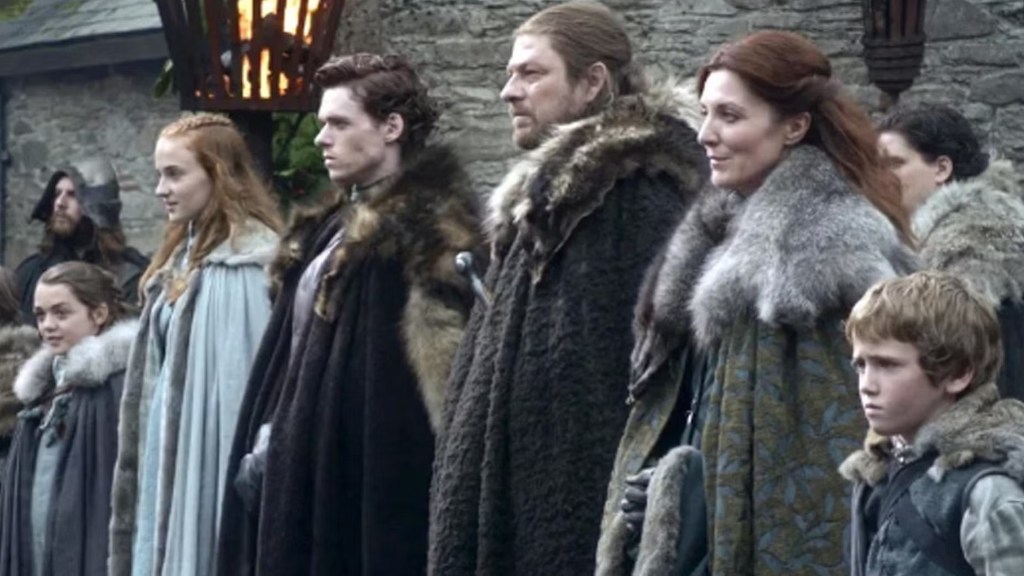
For all of Game of Thrones‘ success on the small screen, it was far from a faithful adaptation of George R. R. Martin’s books. In some ways, this worked to the show’s advantage, but in others, it did not. One of the biggest changes it made was to the ages of its core cast, especially those of the Stark family. The cast was aged up considerably for the show, and while this helped Game of Thrones grapple with some of the story’s more mature elements, it lost some of the books’ tragedy in the process.
When it comes to Ned and Catelyn Stark, the books depict them as being in their thirties, while the show presents them as much older. This makes their tragic endings far more untimely in the books, which also feeds into the stories of their children. Robb Stark, for example, leads his army at the tender age of 15, whereas in the show he is a fully-grown man. In many ways, this saw the show lose a little of the organic naivety of the characters, forcing them to be written as more hardened, calculating figures instead.
10) Catelyn Stark’s Death
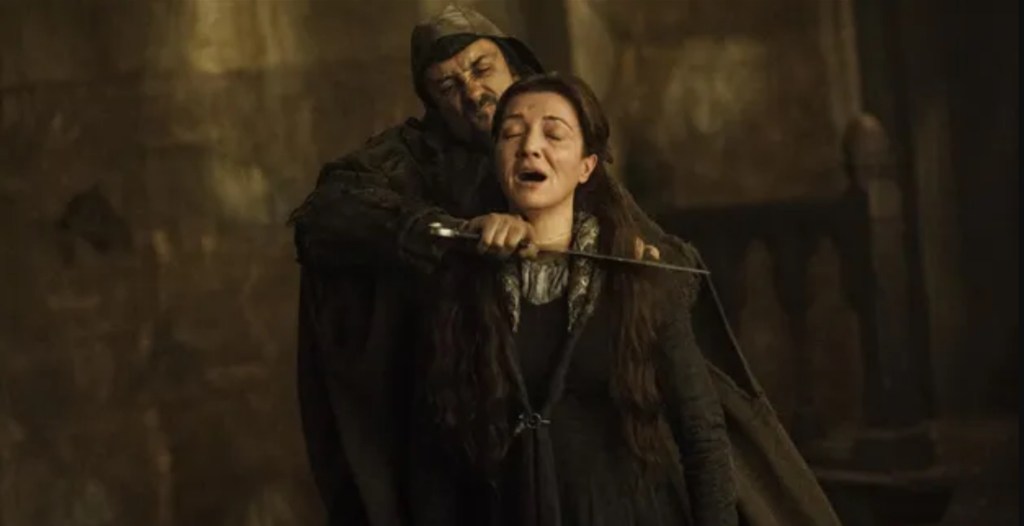
There were countless devastating deaths on Game of Thrones, but few were as shocking to viewers as those of Robb and Catelyn Stark at the Red Wedding. However, the books took Catelyn’s story further, whereas the show opted to simply end her narrative arc with her death at the hands of House Frey. In the books, Catelyn was resurrected by the Brotherhood Without Banners, changed considerably by her wounds and her time spent dead after the Red Wedding.
The books see Catelyn Stark transform into Lady Stoneheart, a half-decayed, mostly silent shadow of her former self. Devoid of any empathy or forgiveness, Lady Stoneheart is a vengeful force who seeks retribution for her murder. While the show’s choice to ignore this plot point entirely is somewhat understandable, it does needlessly rob Game of Thrones of one of its most terrifying and tragic figures.









